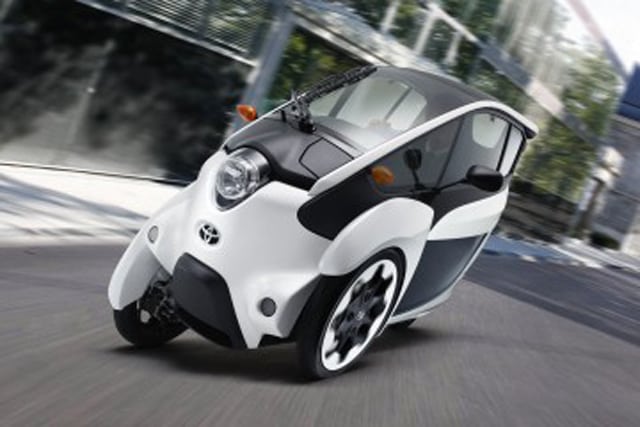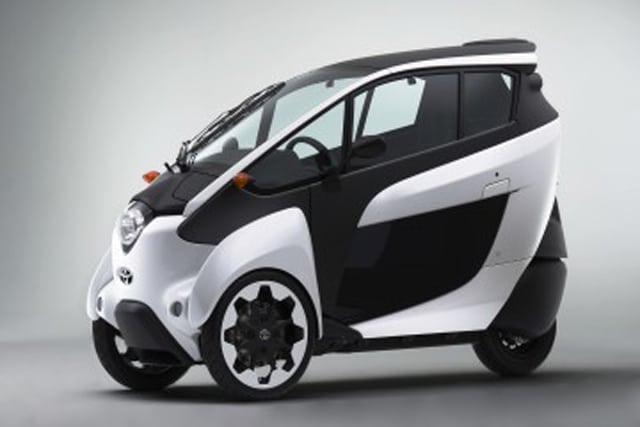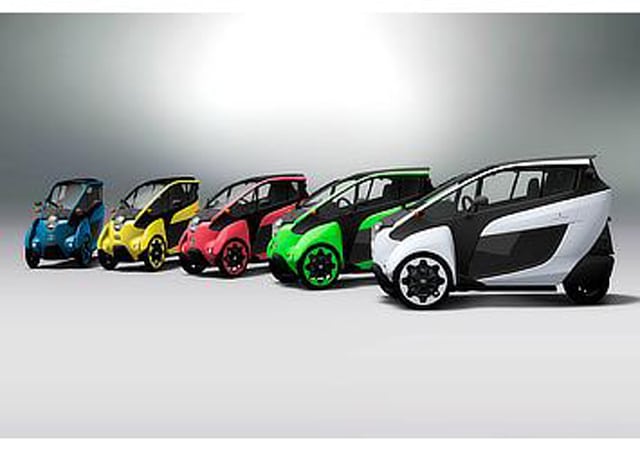When Toyota unveiled its radical “i-Road” concept at the 2014 Geneva auto show, it looked like another one of those odd ideas that would never come to market. “Not so fast,” says Toyota. Starting March 24, the three-wheel personal mobility vehicle will begin real-world testing in Japan.

Haven’t heard about this concept? Here is what you need to know.
Why Three Wheels
The three-wheeled concept responds to the problem facing heavier and more expensive EV vehicles that aren’t any better at moving through cities. Instead, the i-Road can more efficiently move through urban areas without being caught up in congestion. Officially, Toyota calls it a “personal mobility vehicle.”
Toyota’s i-Road concept meets the goal of being lighter and smaller. It is just 33.5 inches wide, 56.9 inches high and 92.5 inches long. This means it is basically half the width of a Smart Fortwo Electric Drive vehicle.
Early news reports claimed it was a two-seater (riding in tandem), yet a new Toyota press release says it can hold one.
A good thing about the concept is the driver being protected from the weather with a fully enclosed body. Toyota says that since it is fully enclosed, you wouldn’t need a helmet.
As for range, Toyota says it can travel 30 miles and needs three hours to completely recharge.
Consumer testing in Japan begins with “limited trails of approximately 20 test participants ranging from member of the general public to trend and industry experts,” according to a Toyota press release.
Toyota has released the specifications of the i-Road it will use for the trial.

Toyota i-Road (Used in Toyota City and Tokyo Verification Testing) Main Specifications
| Length | 2,345 mm | |||
| Width | 870 mm | |||
| Height | 1,455 mm | |||
| Wheel base | 1,695 mm | |||
| Curb weight | 300 kg*2 | |||
| Tire size | Front | 80/90R16 | ||
| Rear | 120/90R10 | |||
| Occupancy | 1 | |||
| Minimum turning radius | 3.0 m | |||
| Powertrain | 2 electric motors | |||
| Maximum speed | 60 km/h | |||
| Cruising range on a single charge | 50 km*3 | |||
| Battery type | Lithium-ion | |||

Innovative Drivetrain
The exterior and interior are quite impressive, yet the best innovation may be in the self-righting front-wheel Active Lean technology. Toyota says this system uses a geared actuator affixed to each of the front wheel’s suspension wheels.
This article explains how it works:
A computer manages the degree of lean of each front wheel—as the angle of lean of one wheel increases, the other lowers by the same amount—using steering angle, a gyroscope, and vehicle speed to induce lean in corners or keep the i-ROAD steady at low speeds. The system also can filter out potentially balance-upsetting road imperfections when traveling in a straight line. The i-ROAD is steered using a squircle-shaped steering wheel rather than a set of handlebars.
Another interesting part of the i-ROAD is the front-wheel drive setup. This isn’t your typical front-wheel driven vehicle. Each wheel features its own 2.7hp hub electric motor powered by a shared lithium-ion battery.
While this concept isn’t a practical solution to all our automotive needs, it could have a role in urban areas. With zero emissions and decent range, the i-Road may just well be coming to a city near you.







